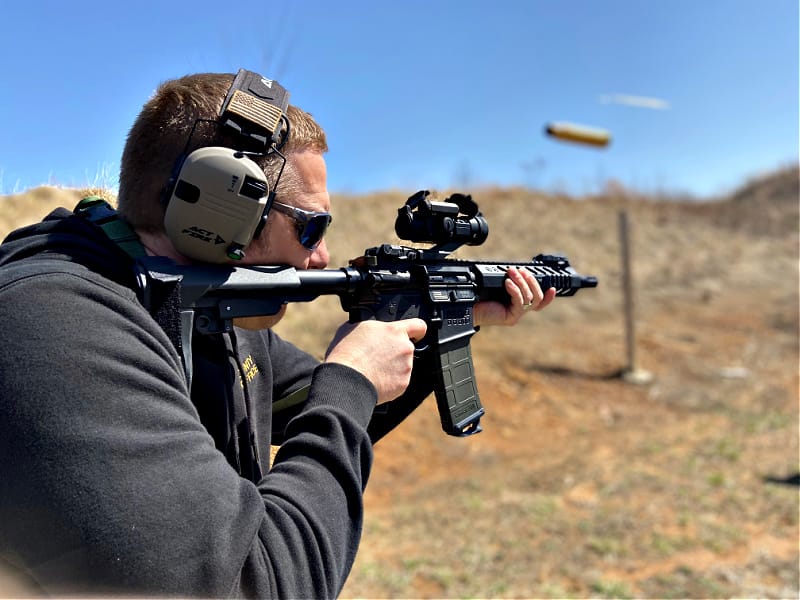If you are building an AR-15 or planning to swap out the barrel, you may be wondering what size of gas tube you need. It can be confusing trying to figure out what barrel, gas tube, and handguard are compatible. You can’t use a handguard that is too short to cover the gas tube. And if the barrel is set up for a mid-length tube, a rifle-length tube will be too short. If you don’t install the tube properly, your AR-15 will not function as it should.

I wasn’t about to pull the barrel, gas block, and tube from it. But it’s not as hard as you think, as long as you have the right tools and of course, the right parts. I won’t get into removing and installing the entire barrel in this article because we have covered that before. But we will look at the most common sizes of gas tubes, what they do, and how to find the right one for your barrel. I will also discuss installing the tube itself.
What does the gas tube do?
If you are not familiar with AR-15 rifles, they utilize a direct impingement gas system. When the bolt is closed, it locks into the barrel extension, or what is referred to as a “locked breach.” This is done by lugs on the bolt face that turn to lock in place. When the trigger is pulled, the firing pin strikes the back of the cartridge (primer) and the powder ignites. Because it’s in a confined chamber, there is only one way for the pressure to go, forcing the bullet down the barrel.

At the same time, the magazine pushes a new bullet up in front of the BCG. Because the BCG was to the rear, it compressed the buffer spring, which forces the BCG forward again. This loads the new bullet into the chamber. However, if the tube is the wrong size or installed incorrectly, there will not be enough pressure to cycle the BCG.
Common Sizes of Gas Tubes
There are four common sizes of gas tubes for the AR-15 rifle. Other sizes are out there, but today, we will focus on the most common options. They are identified by length:
- Pistol length: 10-inch barrels or less. Gas tube length: 4-inches.
- Carbine length: 10-18-inch barrels. Gas tube length: 7-inches.
- Mid-length: 14-20-inch barrels. Gas tube length: 9-inches.
- Rifle length: 20 inches and longer. Gas tube length: 12-inches.
If you are wondering why there are different lengths to begin with, it’s because the length of a barrel determines how much energy is harnessed from the propellants in the barrel. The shorter the gas port in the barrel to the chamber, the more energy will travel through it. But the shorter the barrel, the less energy it creates. In other words, if you had a 20-inch barrel with a pistol-length tube, there would be too much energy.

Installing Gas Tubes
I won’t spend a lot of time on this part, but we will do a quick rundown of the process. Unless you buy a tube already installed on a gas block, you will need both. The gas tube has one larger hole, which is the gas port, and a smaller hole that goes through both sides. This allows the pin to secure it to the gas block. Make sure the gas port on the tube is facing the opening in the gas block (see photo below). Slowly tap the pin into the gas black and through the gas tube.

I end up eyeballing mine most of the time, and I’ve never had an issue, but an alignment tool will make sure it’s in the right place. Use a little blue Lock Tite on the set screws before tightening them, but be sure not to over-tighten them. Once this is done, you can complete the installation of your handguard and muzzle device.
Ready to install your own gas tube?
Once you understand the different sizes and how they work, finding the correct tube isn’t hard. When you purchase a new barrel, it should have the gas tube profile listed on the specs. If you plan to shoot different grains of ammunition, you may also want to look for an adjustable gas block. The installation process is the same, but there is a small screw in the block that lets you adjust how much gas gets through it. Don’t be afraid to install your own barrel and gas tube. If the gun doesn’t cycle correctly, remove it and go through the process again. Hands-on learning is the best way to learn, and there are endless learning opportunities with the AR-15 rifle.


